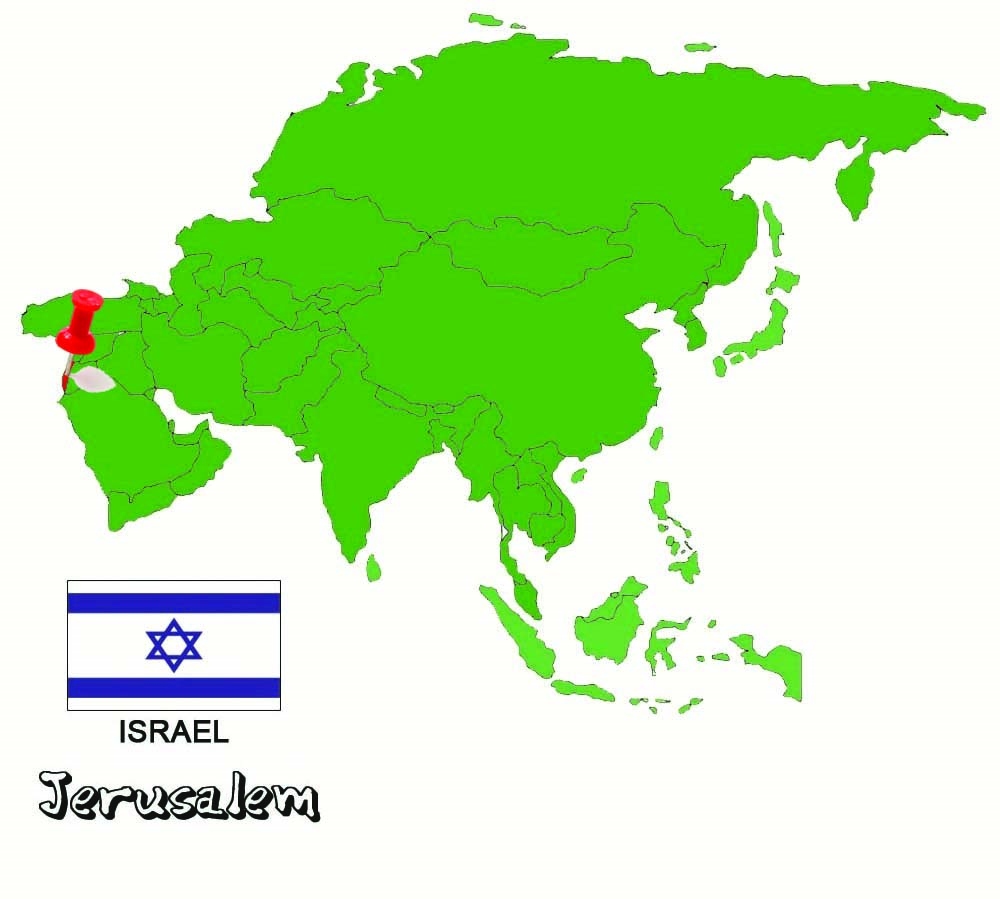
Jerusalem is a unique city like no other in the world. Especially for Greeks, it is a journey of life, due to all the religious and historical interest it presents. It is a pity, however, to focus only on that, as the city encapsulates all the charm of the East and the modern culture of Israel, which certainly will not leave any visitor complained.
A few words about the city
Jerusalem has been the capital of Israel since 1949 and also the largest city in the country, with 933,200 inhabitants. It is located on a plateau in the mountains of Judea, between the Mediterranean and the Dead Sea, and both Israel and the Palestinian Authority claim it as their capital. Indeed, the eastern part of the city is regarded by the international community as an occupied part of Palestine, after the six-day war in 1967, when Israeli forces occupied it from Jordan. The city is a Jewish, Christian and Islamic centre of religious and historical importance, attracting believers from all over the world. The Old City of Jerusalem is a World Heritage site, surrounded by a fortified wall and divided into four districts: Armenian, Christian, Muslim and Jewish. So I will try to present you the capital of religions through my own eyes and share with you what I think someone should see, visiting the city for the first time.
Church of the Holy Sepulchre
The Church of the Resurrection or Church of the Holy Sepulcher is undoubtedly the most important place of worship of the Christian faith. Located in the centre of the old city, in the Christian Quarter, is built in the area of the hill of Calvary (Golgotha), where, according to the scriptures, was the crucifixion, the burial and the resurrection of Christ. From an architectural point of view, the monument is not coherent, as it is a complex of temples, sanctuaries and chapels that are included in the main building. The first temple was erected between 326 AD and 335 AD by Constantine the Great and his mother St. Helen, under the guidance of the architect Zenovius. Above the Tomb was built the circular structure of Rotonda, which was in contact with the huge Basilica, where the Holy Cross was found. Over the centuries that followed, the Temple suffered successive catastrophes and was rebuilt by the Byzantine Emperors and Christian rulers. For 2,000 years, is the reference point for Christianity and every year receives thousands of pilgrims, who piously worship the canopy of the Holy Sepulchre. Especially during the Easter, many are flooding the Temple in order to follow the miraculous ritual of the Holy Light. As can be seen, the tails are always huge for pilgrimage to the Holy Sepulcher (in the most optimistic case, two hours wait), so arm yourself with patience. Admission is free.
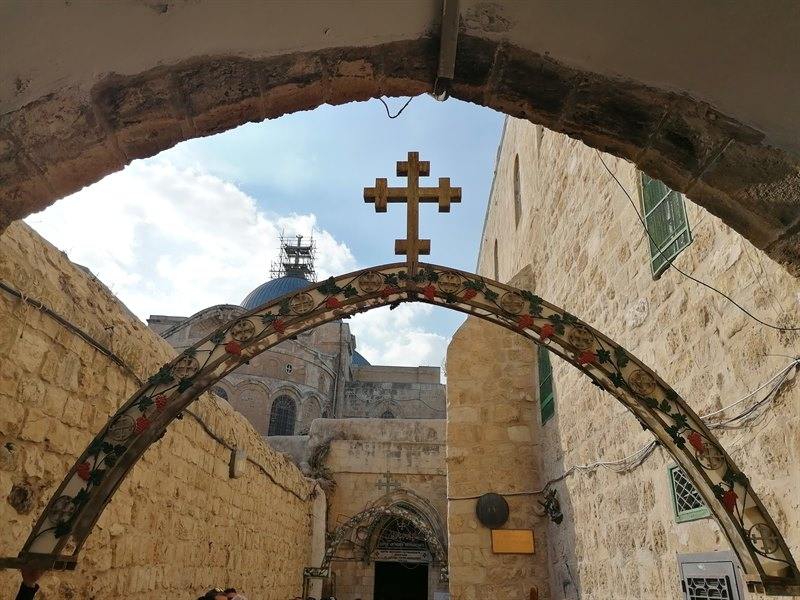
Via Dolorosa
The way of martyrdom (Via Dolorosa) is the route, according to tradition, that Jesus took carrying the cross, from Praitorium to the point of crucifixion to Golgotha. Today performed rituals with 14 intermediate stops:
1. Praetorium. The death sentence of Jesus.
2. Praetorium. Jesus receives the cross.
3. El Waad Street Corner, the first fall of Jesus from the weight of the cross.
4. Armenian Catholic chapel. According to popular tradition, Jesus met his Mother.
5. The House of Simon the Cyrene. The Roman soldiers hugged him to carry the Cross for a few feet in Jesus ' place.
6. Veronica residence. According to The Legend (The Veil of Veronica), St. Veronica wipes the face of Jesus with her veil and mirrors the image of His Face miraculously.
7. Gate of damnation in the Latin Chapel, where the second fall of Jesus took place.
8. Jesus meets and consoles the Daughters of Jerusalem.
9. Entrance to the Church of the Resurrection, where the third fall of Jesus took place.
10. East of the Holy Court (Chapel of Armenians and Syrians), where Jesus is stripped to begin the process of crucifixion.
11. Calvary (Golgotha), outside the Latin Chapel.
12. Calvary (Golgotha), outside the chapel of the Greek Orthodox.
13. Point of detachment.
14. The Holy Sepulcher.
Praetorium
Praetorium, the prison of Christ, is located on Via Dolorosa and was the Roman Governor's office and his official residence. This point is particularly important for Christianity, since it is the place where Pontius Pilate ordered Jesus to be whipped, the place where Roman soldiers dressed Him in red champagne, imprisoned Him, and sentenced Him to the ultimate penalty of death by crucifixion. From here, he took the Cross to begin the path of Martyrdom. Inside Praetorium, you will be able to see the prisons of Christ, as well as Barabbas and the robbers who were crucified with Him. Is easily understood that the conditions of detention were abysmal, since in this low and narrow cave, the guards had placed His feet in holes, in order to prevent Him from escaping.
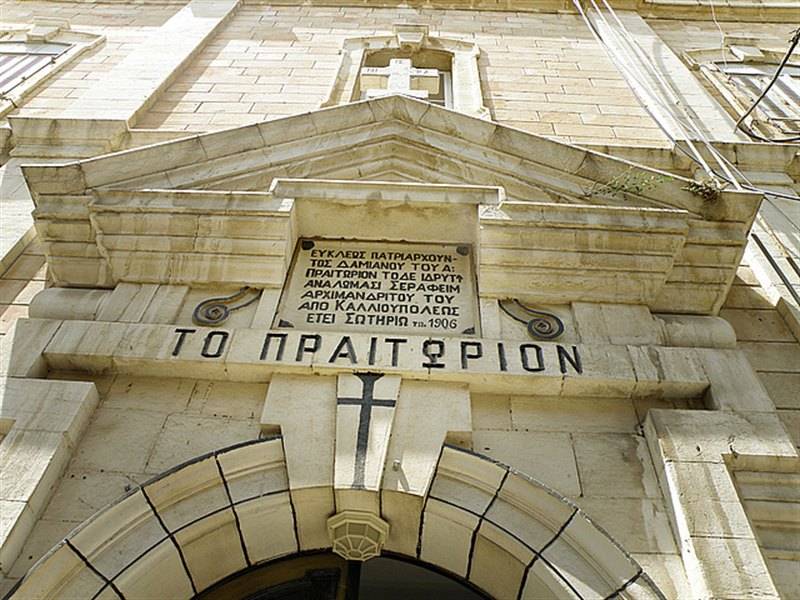
Mount of Olives
The Mount of Olives (Har ha-Zeitim) is located east, right next to the Old City of Jerusalem and took its name from the olive groves that once covered the mountain ridges. It is mentioned several times in the Gospels, since there took place several important events of the life of Christ and the Virgin Mary. Most important of course, is His Ascension to heaven. Because of its importance, both with Jesus and the Virgin Mary, the Mount of Olives has been a place of Christian worship since ancient times and today is an important place of worship for Christians, Catholics and Protestants.
Cenacle
The Cenacle, also known as the "Hyperion", was the first Christian church! It is a hall in the tomb of David and traditionally considered the area where The Last Supper was held. According to the Acts of the Apostles, the apostles appear to have used the building as a temporary home when they were in Jerusalem, although mr. Jebin Fauset Brown (Bible analyst) disagrees, considering the room a meeting place. And this point is especially important for the Christian tradition, since in addition to the event of the Last Supper, in this room the Holy Spirit appeared to the eleven apostles after Easter. The entrance is free.
Tower of David
The Tower of David is an ancient fortress built on the Acropolis of the old town, near the gate of Jaffa. Its erection dates from around the 2nd century B.C. and over the centuries it was destroyed by invaders and rebuilt in succession. Its construction was aimed at strengthening one of the city's most strategic defence points, while its name was due to King David, as the tower was included in the fortification of the city designed under his dominion. Since 1989, The Jerusalem Museum of history has been hosted inside the tower, where important archaeological finds are exhibited, describing the evolution of the city over a period of four millennia! This site is one of the most popular among tourists, because in addition to its archaeological interest it offers a panoramic view of the whole city and is one of the most ideal places to immerse the urban outline, one of the most historic cities on the planet.
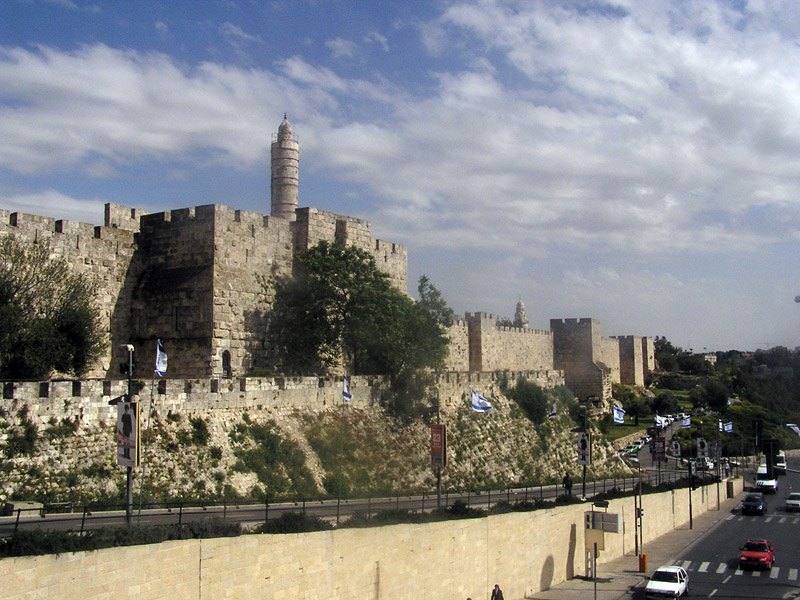
Wailing Wall
It is a remnant of the ancient wall that surrounded the courtyard of the first and second great Jewish temples. It is considered one of the most sacred sites of Judaism and annually it is a place of pilgrimage for thousands of Jews around the world. The year of construction of the original section dates back to 19 B.C. when Herod the Great was in power, while the remaining layers added after 700 BC. Located in the Old City of Jerusalem, and besides its visible part accessible to pilgrims, there is one that runs through the foothills of the Temple Mount and is in the Muslim Quarter. This caused ongoing violence between the two communities. That was why in 1930 an international committee was convened to consider the claims and determine the rights for each side. Today it is a large outdoor prayer and pilgrimage site, and the first references attesting to its function date back to the 4th century BC. Admission is free, but you will go through a rudimentary bag check before you pass, while on Shabbat the photos are forbidden.
Dome of the Rock
The Dome of the Rock is a Muslim sanctuary, located on the Temple Mount in the Islamic quarter. Its erection is placed between 689 and 691 AD. and is an important architectural achievement, as manufacturers tried to compete with some of the magnificent places of worship of other religions (eg Church of the Holy Sepulchre). In fact, for the first time, the style of the rotunda was adopted, which until then was unknown to Islam. The purpose of the erection was to create a pilgrimage mosque and not a mosque for public worship. Its construction was Octagonal and the wooden dome was based on 24 pillars. The exterior is covered by colored ceramic plates, while the dome, after successive restoration, was covered by the famous gold casing (1967). The last restoration took place in 1993 with the donation of King Hussein of Jordan and cost $8.2 million! Administrative the mosque is controlled by the government of Jordan and it is worth noting that until the mid-20th century allowed a very limited number of non-muslims to approach the area of the temple mount. This created ongoing tensions with the Jewish community for which the site is also sacred. Since 2006, the surrounding area has been open for tourist visits from 7:30 to 11:30 in the morning and from 1:30 to 2:30 in the afternoon.
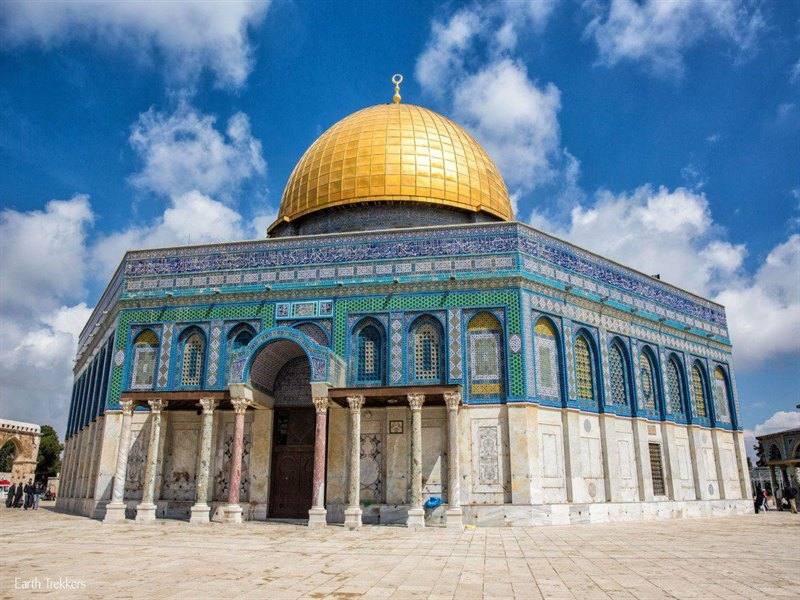
Israel Museum
The Museum of Israel considered one of the world's leading museums of art and archeology, boasts more than half a million objects on the Bible, Jewish life, archeology in the Holy Land, local and international art. It was founded in 1965, designed by Alfred Mansfeld and Dora Gad, while in 2010 underwent a comprehensive three-year extension to significantly improve the visitor experience. Perhaps the most interesting exhibition of all is the Shrine of the Book, which hosts, the world's oldest biblical books! Also, it’s worth noting the Rabbi's costumes and jewelry collections, the country's development wing, as well as various exhibits of modern Israeli history. The entrance costs 50 shekels, that is, about 13e.
Yad Vashem
Yad Vassem is essentially the official monument of the Jewish state to the victims of the Nazi Holocaust. Located in the western part of Mount Hertzl and the entire complex (45 acres) includes the Holocaust History Museum, the Children's Monument and the Memory Hall, the Holocaust Art Museum, sculptures, outdoor commemorative monuments such as the valley of communities, a synagogue, archives, a research institute, a library, and an educational center: the International School of Holocaust Studies. It was founded in 1953 in Jerusalem after a decision of the Knesset and today has 2 million visitors per year. The main part of the complex, the Holocaust History Museum, is built mainly underground and records the history of the Holocaust from the Jewish perspective. Visitors are guided through galleries showing the history of the pre-Holocaust communities, the rise of Nazism, and the unfolding horror of those times, including experiences in death camps. Yad Vashem emphasizes the experiences of individual victims, using original objects, survivor testimonies and personal items. At the end of the museum, visitors are led, through the Hall of Names, to a balcony with a panoramic view of Jerusalem. The entrance with audio guide tour costs 25 sequels (about 6.5 E), while for the Holocaust History Museum and all other places you will not have to pay anything.
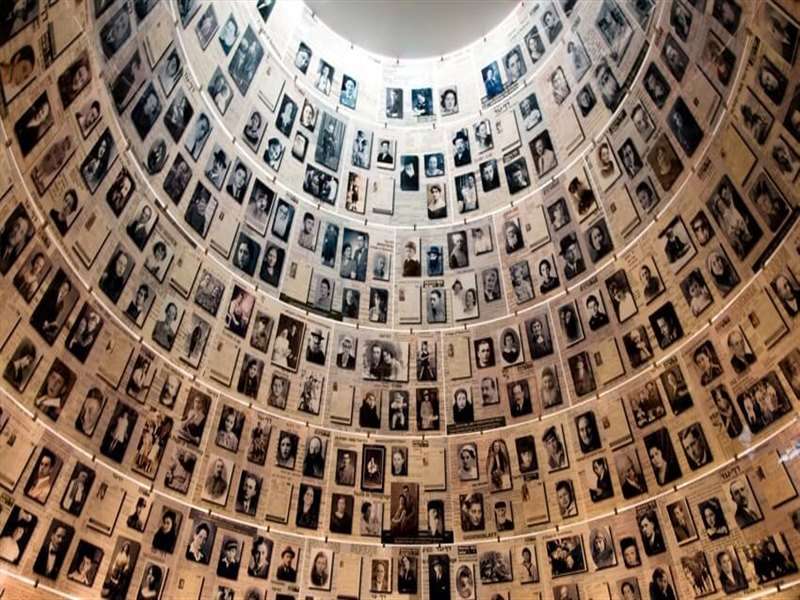
Gates
The walls of Jerusalem's Old Town, built in the early 16th century by the Turkish Sultan Suleiman the Magnificent, have eight different gates. All except one (the gate of Mercy), still serve residents and worth visiting.
Zion Gate
This gate bears the biblical name of Jerusalem in Hebrew and English, while the Arabic name of this gate is the Gate of the Prophet David, as the tomb of king David, on adjacent Mount Zion, is only a few steps. The Zion Gate leads directly to the Armenian and Jewish districts.
Dung Gate
The unusual name of this gate comes from the waste that was thrown there in ancient times, when the winds spread the unpleasant odors throughout Jerusalem. This gate leads directly to the Western Wall and the Archaeological Park.
Golden gate
This gate, on the eastern wall of the Dome of The Rock, is perhaps the most famous of all. It is also called gate of Mercy or Eastern Gate and has been blocked for centuries, as it is said that it awaits a wondrous opening when the Messiah comes and the dead are resurrected.
Lion’s gate
This gate was named after a pair of sculptures on both ends. In fact, sculptures are tigers, the heraldic symbol of the 13th-century Sultan Baybar. It is also called St. Stephen's gate, after the First Christian martyr, who according to tradition was stoned in the area. The Lion's gate leads to Bethesda's pools, Via Dolorosa, and markets, while it became famous during the Six-Day War.
Herod's gate
Despite its name, the infamous Judean king had nothing to do with this gate. Herod's Gate leads to the Old Town markets and in Arabic and Hebrew is called the Flower Gate. Some say the name comes from a rosette carved on it. However, in Arabic a similar word means "awakened" and may refer to a nearby cemetery and the hope of resurrection.
Damascus gate
The Damascus Gate is perhaps the most imposing of all in the old city and was named after the city from which Jerusalem's rulers once came. It is always a busy street, thanks to the bustling markets inside. Under the gate of the 16th century, archaeologists have uncovered part of the entrance built by Emperor Hadrian in the 2nd century AD.
New gate
This is the only entrance to the Old Town that is not part of the original design of the 16th century walls. It was violated during the declining days of the Ottoman Empire, to allow Christian pilgrims quicker access to their sacred sites in the bastions.
Jaffa gate
Finally, this was the destination of Jewish and Christian pilgrims, who disembarked at the Port of Jaffa, hence the name of the gate. Lead (and still leads) directly to the Jewish and Christian quarters, as well as the most popular parts of the market and the Museum in the Tower of David.
How to go
Although Jerusalem is the capital of the country, it doesn’t have an airport, so you have to go to Tel Aviv first. The best choice of transition in the town comes from Ryanair, which with proper planning can get tickets from 34€ return! If you want a more comfortable flight, you can choose a flight with Aegean from 109€ round trip. From there you can take one of the local buses, Sherut (to which I will refer immediately below) or book an organized tour from a local travel agency.
Where to stay
One of the disadvantages of Israel is the expensive accommodation. And when I say expensive I mean it, since don't expect to find anything below 90e per day! Even the hostels or apartments have extravagant prices, especially during the holiday season. My suggestion is the New Imperial Hotel, housed in a historic 19th-century building, which belongs to the Greek Orthodox Church. Located next to Jerusalem's Old Town and is fully equipped with everything you need.
How to move
Let me first point out that in the old town, where you will spend most (if not all) of your time in the city, there are no means of transport, as it consists of narrow cobbled streets. Jerusalem, however, has several modes of transportation for residents and tourists, since there are buses, trams and trains that will take you wherever you wish. The buses are almost everywhere in the city, with over 100 lines, and there is a separate network serving the Arab-Israeli cities and the Palestinian cities of the West Bank. In my opinion, however, trams are the best way to get to the heart of Jerusalem, as they are faster and come almost every ten minutes. Depending on the days you will stay in the city, I suggest you issue a Rav Kav travel card, which costs 5 shekels, either from a driver or from the homonymous application, to move more comfortable and affordable. Finally, I have to mention the Sherut. Sherut is a kind of minivan taxi, which you share with 8-10 other people. You can get to your destination faster and cheaper than using a regular taxi. It runs city-by-city routes, routes within the city itself and finally, routes to and from the airport from Jerusalem, Tel Aviv and Haifa. You can use it from the start points, otherwise stop it on the road.
What to eat
Israel's multicultural character is also reflected in the country's cuisine. The countless immigrants who came to the country have brought with them their favorite family recipes from North Africa, the Mediterranean and other Middle Eastern countries. Some of the things you should try before leaving town are falafel, hummus, shawarma, shakshuka, olives, halva, local fish from the Jordan River, fresh fruit juices, delicious breads and a variety of honey desserts. For those who don't know, falafel is something like chickpeas balls, hummus is a creamy salad of tahini and chickpeas, shawarma is something like doner and finally shakshuka is a delicious dish, with egg, tomato and garlic, which is usually eaten for breakfast or dinner and is served in hot dishes that are cooked at the moment.
Useful information

In Jerusalem we travel with a passport valid for at least 6 months, and do not need a visa in advance. Once you enter the country, the Israeli authorities will grant you a free visa for a month, but you should not miss it, as you will then be in trouble.
In Jerusalem the language used is, of course, Hebrew, while most speak Arabic too. Younger people know English, and everyone is willing to help if they know.
The currency of the country is the New Israeli Shekel (ILS) and its current rate is 1 € = 3.92 shekels. A lot of shops in the flea markets accept dollars and euros.
Convert your money either to the dozens of banks in the city, or to the exchange offices, which indicate the exchange rates, since they get very little commission.
Take care of your personal belongings as in the city there is an increased risk of pickpockets and other petty criminals.
The Greek Wage Consulate General in Jerusalem is located at 31 Rachel Imenou St. and its phone number is +9722 5619583 5619584.
The best period to visit Jerusalem is, of course, the holiday season, whether Christmas or Easter, when the atmosphere is more intense.
Shabbat is something like our Sunday and lasts from sunset on Friday to sunset on Saturday. During this time, everything is under-functioning from shops and restaurants to public transport, so be prepared.
Recommended excursions → Tel Aviv, Bethlehem, Dead Sea

If this article seemed interesting or contributed to your quality information, then you can like my facebook page: o_thessalonikios or follow me on instagram!
Mouzakidis Pantelis








